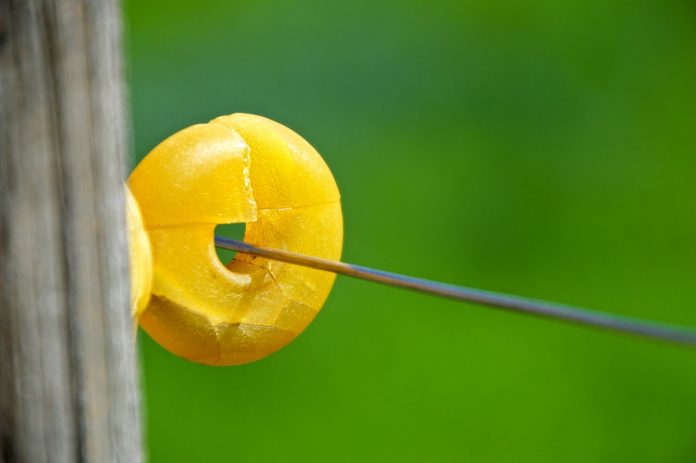Electric fences are not a new concept. They were invented in New Zealand in the 1930s. There is a big difference between electric fences and woven and barbed wire. Barbed wire and woven wire are a physical barrier while electric fences are more of a psychological barrier.
If the fence was not charged, livestock would not have any problem going through it. When livestock are trained to an electric fence, they do not continue to test it. They will avoid getting shocked but the fence must have enough power to make them respect the fence. Some people love electric fences and others have not had good luck with it.
I know some farmers who only build single-strand electric fences for both perimeter and cross fences. Other farmers sleep better at night knowing their woven wire fence is keeping livestock where they are supposed to be. The biggest advantages of an electric fence are the savings of time and cost to build the fence. For farmers who are considering building an electric fence, or those who have electric fences with problems, here are tips to make the fence work to the best of its potential.
Energizer
The first component of an electric fence is the energizer. You must have an energizer with enough power to cover the distance of the fence. The fence must have enough joules to make the livestock respect that fence. Joules can be thought of as horsepower. You must have enough power to run the fence.
It is recommended that your energizer will provide at least one joule per mile. Energizers that plug into a 110v outlet are the best value. They work well and are the most joules for the cost. Battery-powered energizers are portable but batteries must be recharged often. Solar energizers are the most expensive for the number of joules they provide.
Grounding
One of the most common issues with electric fences is not properly grounding the fence. There must be a good ground to provide a shock. There should be at least three ground rods that are six feet long. They should be spaced 10 feet apart and should be joined together with one continuous piece of 12.5-gauge wire.
For a multi-strand fence, you should not electrify every strand. Hooking up the strand with no power to the ground rods will add to the shocking ability of the system. Galvanized ground rods should always be used. When the soil is dry, the grounding system does not work as well. Place ground rods in a damp area if possible. If the fence is clean and still doesn’t show enough joules on the tester, more ground rods may be needed.
Insulators
Another mistake that is common with electric fences is using insulators that do not keep the wire from conducting to the posts. Tube insulators are the cheapest option but do not work as well as nail-on insulators. The tube insulators are a very thin material. Just because there is a piece of plastic between the wire and the post does not mean it will not conduct.
They also slide down the wire if the staple is not tight enough. If the staple is driven in too tight it punctures the plastic and the insulator leaks. Spending a little extra money on insulators will save a lot of headaches in the long run.
Temporary fencing
For rotational grazing, the use of poly wire and step-in posts allows a farmer to quickly divide pastures without building a permanent fence. It is a cheaper alternative, does not require a lot of labor and allows flexibility in the grazing system. When using poly wire, you must remember that it is not as conductive as high-tensile wire. There is a reason the longest roll you can buy is 1,320 feet long. It is not meant for longer stretches than this. A geared reel allows you to roll the wire up in minutes.













